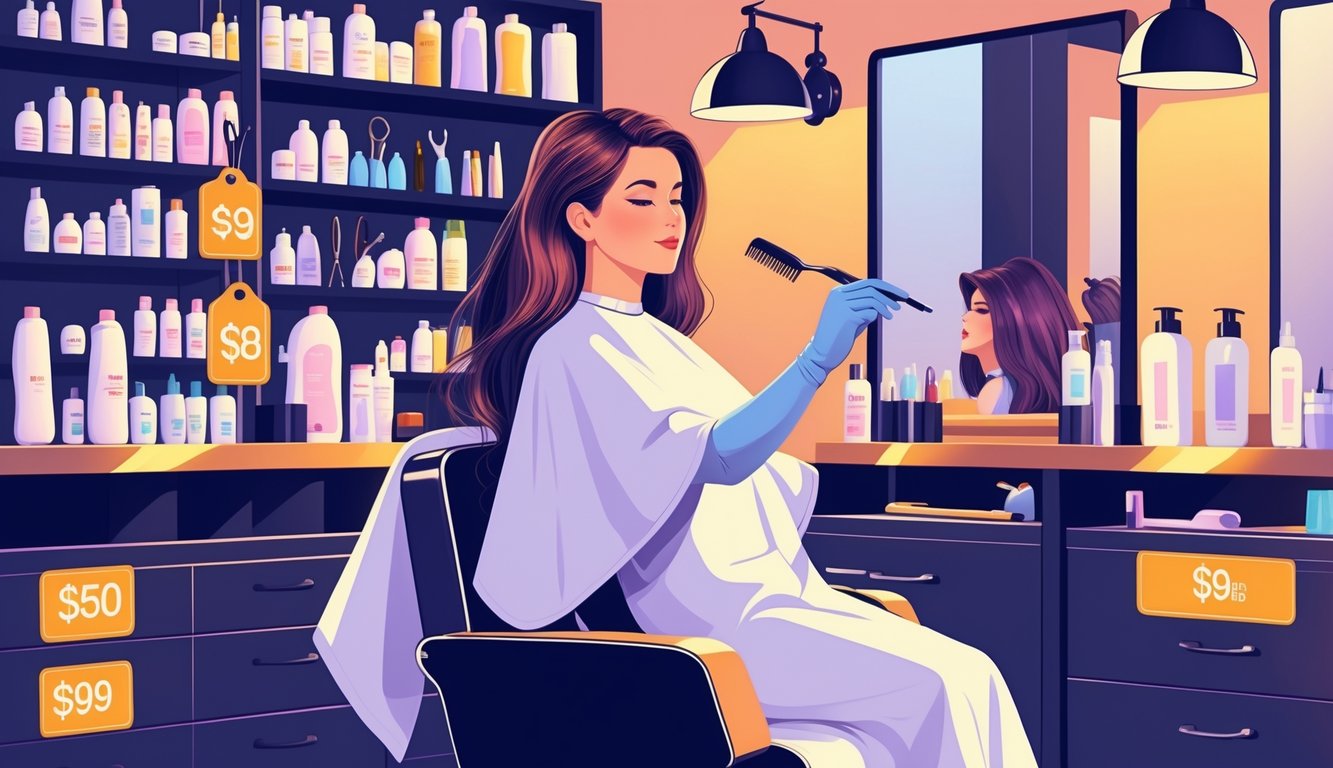
Tips for Consumers Navigating Higher Prices
Scrolling my inbox, I’m just asking: did every root touch-up kit double in price overnight? Feels like it. Nobody told me my budget would explode just to cover an inch of roots. The difference between $12 and $22 at checkout is not small when you’re standing there with a cart full of groceries.
Saving on Root Touch-Up Kits
Coupons? They never show up when you actually need them. But signing up for those annoying retailer emails—Ulta, Sally Beauty, whatever—sometimes lands you a random 15% off code that actually works. I price compare online, which feels pointless until I see CVS charging $4 more for the exact same Clairol kit as Target. I keep screenshots. My phone’s a mess.
Loyalty programs: slow, but eventually you get a $10-off coupon, which is… okay, I guess. One time I called L’Oréal after a color disaster and they sent me a coupon, so complaining does work sometimes. Friends swap leftover shades. I once used my neighbor’s “Medium Brown 5N” and nobody noticed. Clearance bins are gold—just make sure the peroxide tube isn’t about to explode. Learned that one the stinky way.
Choosing the Right Product
Nothing’s worse than dropping $18 on a “pro” kit and the brush falls apart before you’re done. Actual colorist tip: texture-matching is more important than undertones. If your hair’s coarse, get the waxier formulas. That’s why people write essays about Garnier’s consistency. Ignore “100% gray coverage” claims—it’s marketing.
I always check ingredient lists. Some kits still use ammonia (not a fan), others use MEA. Even stylists admit to using Revlon Root Erase between appointments because it’s cheap and works. Match the kit to your style—powder, spray, brush-on—whatever you can actually use. Sprays around my temples? Nope, disaster. My coworker loves them, though. And seriously, don’t trust the shade chart. Patch-test the lightest brown before you go all-in with black. Ask me how I know. (Actually, don’t.)
Frequently Asked Questions
Everything’s changing—prices, formulas, salons adding charges for “premium pigment enhancements” like anyone knows what that means. At-home fixes are hit or miss; my neighbor’s DIY disaster last winter proved how fast these kits can backfire if you’re distracted or, I don’t know, multitasking on Zoom.
Why are prices for professional root touch-ups on the rise?
Suddenly everyone’s talking “supply chain bottlenecks” for ammonia-free formulas, but do stylists even care about logistics? I doubt it. One salon owner blamed “higher operational fees,” but honestly, it just means they bought a new espresso machine and we’re footing the bill. Supposedly, new pigment tech is pricier, but my hair never looks shinier. Color brands hike their wholesale prices, but clients only notice when foils get skimpier or appointments are booked into the next century.
What factors contribute to the varying costs of different types of root touch-up services?
“Touch-up” should mean one price, but nope. There’s single-process, micro-root blending, express coverage—somehow you pay for two inches of regrowth like it’s a whole field. I once got charged $40 extra for washing my hair with coconut oil. Apparently, that’s a crime. Prices depend on where you live, how much your stylist loves TikTok, and if you’re hiding gray or have a box dye horror story. National price lists mean nothing; my sister in Austin pays half what I do in Brooklyn for the same developer.
How much should I expect to pay for a root touch-up if I have grey hair?
That’s the big question. Salon menus say “extra coverage for resilient grays” like my hair is plotting bankruptcy. They push bonding boosters and “longer processing fees,” whatever that means. My last gray-root session cost $90, and the stylist gave me a weird lecture about “age-related pigment loss.” Some salons price by how much gray you have, so honesty with your mirror apparently costs extra.
Is there a significant cost difference between root touch-ups for blondes versus other hair colors?
Blondes, buckle up. Lifting pigment always costs more because “the process is delicate,” or so they say. One stylist told me bleach roots need toners and masks almost every time, which just adds to the bill. Redheads usually get off lighter unless the color fades, and brunettes pay for stubborn undertones. But blonde pricing? Sometimes I think they charge more just because they know you’ll pay it.
What are some tips for finding affordable root touch-up services without compromising quality?
Price shopping sounds smart until you end up at a salon with anime posters and a stylist who eyeballs the developer. Regulars score deals by booking with apprentices—sometimes they’re better than the veterans if you ask them about formulas. Salon email lists send coupons, but you’ll have to book at 3pm on a Tuesday. Local Facebook groups actually help; stylists post flash sales, and first-timers get random add-ons that are probably just scented water.
Can DIY root touch-up kits be a cost-effective alternative to salon prices?
So, DIY kits. I mean, I clocked it—less than ten bucks, maybe half an hour, tops. That’s, what, faster than waiting for takeout? But seriously, does it ever get easier? Nope. Spray-ons and powders? They flake. It’s like dandruff, but more embarrassing because you paid for it. Also, box dye still reeks like my high school bathroom. I tried a couple from that “10 Best Root Touch-Up Products of 2025” list—supposedly, they last for weeks. Yeah, right. Mine started washing out after shampoo number three. Maybe it’s the gym’s water? Or maybe they’re just lying. Honestly, the worst part: if you go a little heavy-handed, you get this weird helmet thing that only shows up in sunlight. Good luck explaining that to your boss.



